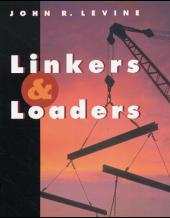| Verlag | Morgan Kaufmann |
| Auflage | 1999 |
| Seiten | 272 |
| Format | 19,2 x 23,6 x 1,5 cm |
| Gewicht | 468 g |
| Artikeltyp | Englisches Buch |
| Reihe | The Morgan Kaufmann Series in Software Engineering and Programming |
| EAN | 9781558604964 |
| Bestell-Nr | 55860496UA |
Whatever your programming language, whatever your platform, you probably tap into linker and loader functions all the time. But do you know how to use them to their greatest possible advantage? Only now, with the publication of Linkers & Loaders, is there an authoritative book devoted entirely to these deep-seated compile-time and run-time processes.
The book begins with a detailed and comparative account of linking and loading that illustrates the differences among various compilers and operating systems. On top of this foundation, the author presents clear practical advice to help you create faster, cleaner code. You'll learn to avoid the pitfalls associated with Windows DLLs, take advantage of the space-saving, performance-improving techniques supported by many modern linkers, make the best use of the UNIX ELF library scheme, and much more. If you're serious about programming, you'll devour this unique guide to one of the field's least understood topics. Linkers & Loaders i s also an ideal supplementary text for compiler and operating systems courses.
_Includes a linker construction project written in Perl, with project files available for download. _Covers dynamic linking in Windows, UNIX, Linux, BeOS, and other operating systems.
_Explains the Java linking model and how it figures in network applets and extensible Java code.
_Helps you write more elegant and effective code, and build applications that compile, load, and run more efficiently.
Inhaltsverzeichnis:
Linking and Loading. Architectural Issues. Object Files. Storage Allocation. Symbol Management. Libraries. Relocation. Loading and Overlays. Shared Libraries. Dynamic Linking and Loading. Advanced Techniques.
Rezension:
"I enjoyed reading this useful overview of the techniques and challenges of implementing linkers and loaders. While most of the examples are focused on three computer architectures that are widely used today, there are also many side comments about interesting and quirky computer architectures of the past. I can tell from these war stories that the author really has been there himself and survived to tell the tale."-Guy Steele

